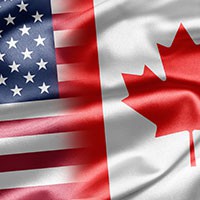Will the U.S. Election Affect Canada’s Economic Outlook?

Guest Columnist Geoff Currier
Will the election results in the U. S. affect the Canadian economy? It’s quite possible, as the Canada-United States-Mexico Agreement is up for renegotiation and review in 2026 and the potential for expensive new tariffs has been raised. It was just last month that Canadians could expect a solid increase in real GDP growth in 2025, followed by a levelling off in the following two years. That was the projection from Canada’s Parliamentary Budget Office report. Here’s the forecast, in the absence of significant new Trumpian policies:
Yves Giroux’s office latest projections show that while GDP is a sluggish 1.1% in 2024, we should expect that number to double to 2.2 % next year. Longer term projections have the GDP sitting at around 2% or slightly under for 2026 through 2029.
Our unemployment rate will remain well above 6% for the current year and is only expected to improve slightly next year. However, the PBO anticipates an easing of unemployment beginning in 2026 through 2029. Nevertheless, it’s still estimated that more than 5.5% of Canadians who are eligible to be in the workforce, will not be. This speaks to one of the larger challenges of Canada’s poor productivity numbers. It also connects to the current government’s immigration policies. Those two issues require longer investigations.
As is widely known already, Canada’s inflation rate is dropping. The PBO projections see inflation well under 2% beginning next year and carrying on for at least five more years. One of the primary indicators of inflation is the price of oil which is expected to fall below $70 US a barrel next year and then bump up slightly in 2026. Projections from the PBO indicate low volatility in the price of oil but there are always unforeseen political events which can change those projections.
Giroux’s report states “The Canadian economy surpassed our expectations in the first half of 2024.” This growth was driven largely by “household and government consumption.” As stated above we should expect a softening of GDP growth over the second half of 2024 with diminished government spending.
Government revenues will continue to rise at a healthy rate in the next five years and as a result the there will be a modest reduction in the deficit. Both personal and corporate tax revenue will increase. However, the long term projections still indicate that by 2029 the federal deficit will be more than $22 billion and that Canada’s debt will surpass $1.4 trillion. Federal debt as a percentage of GDP will drop from the current 42% to about 39% by 2029.
The report does not project when Canada might see a balanced federal budget.
Concerns about government debt are stated in the PBO report. “As the effective interest rate on the debt edges higher in 2024-25, we project the debt service ratio to increase further and reach 11.2 per cent in 2029-30-well above the pre-pandemic record low of 7.0 per cent in 2018-19.” Adding some $200 billion to our national debt over the next six years will contribute to the debt service ratio.
On the expense side of the leger, the PBO estimates that benefits for Canadians seniors will spike from the current $76 billion a year to nearly $108 billion by 2030 as the nation’s senior population increases. Future economic projections must, of course, take into account Canada’s shifting age demographics.
Employment insurance benefits are also expected to rise significantly. Currently sitting at $23 billion a year, the PBO sees that figure climbing to nearly $31 billion by the end of the decade. Some of this will be offset by the elimination of COVID benefit payments for some workers. Those gains in turns will be handed over to a nearly 20% increase in child benefits over the same period ending in 2030.
Bottom Line: Overall, prior to the election results, there was little to suggest that Canada’s economy is in for a massive spike in any area in the next five years. Rather, the PBO report showed only modest shifts in the major indicators in Canada, such as GDP growth, unemployment and a modest reduction in the federal deficit.
Should Canadians anticipate any seismic economic shifts in the foreseeable future? That will now depend on whether significant new policies south of us, in particular new tariffs, are introduced, BNN Bloomberg reports. “There was a total of more than $960.9 billion in trade between Canada and the U.S. in 2022, accounting for close to two-thirds of the more than $1.5 trillion in worldwide trade that year, according to Statistics Canada”.
This, according some experts, could affect the progress that has been made in arresting inflation in the short term. Time will tell.